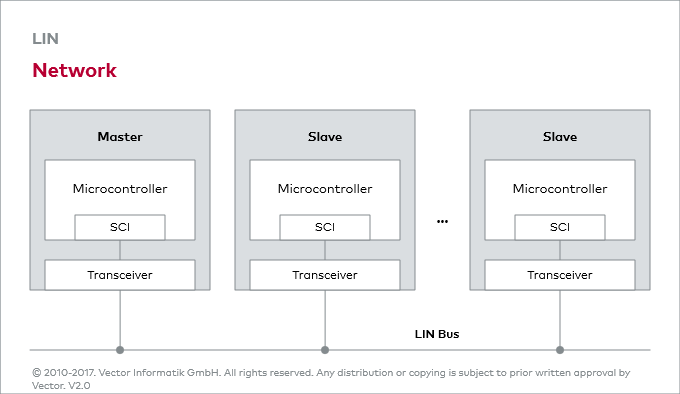Basic Layout
LIN Cluster
A LIN Cluster consists of a number of nodes that are interconnected via a physical transmission medium (see figure: Network). A general distinction is made between two types of nodes. There is always a master that controls bus access, and there are multiple slaves that can send and receive information.
Communication Controller
For cost reasons, no dedicated communication controller was implemented. Instead, the protocol must be integrated as a software component in the microcontroller. It should be clearly noted whether a node is to be implemented as the master or a slave. The microcontroller is connected to the transceiver via the serial interface. This interface is referred to as the SCI.
LIN Transceiver
The transceiver serves to physically connect the bus to the network. This chip converts the logical bit sequence into transmittable bus levels and in the reverse direction. The transceiver has a Tx section and an Rx section for this purpose. While the Tx section is used to generate the voltages on the bus, the Rx section enables evaluation of the received levels. In addition, the transceiver has a mechanism by which a node can be awakened via the bus. This is referred to as the Wakeup.
Physical Layer
In LIN, physical signal transmission only requires one conductor (single wire). To maintain radiated electrical emissions within limits, the transmission rate is limited to 20 kBit/s for LIN. Another restriction is the maximum recommended number of 16 nodes.

